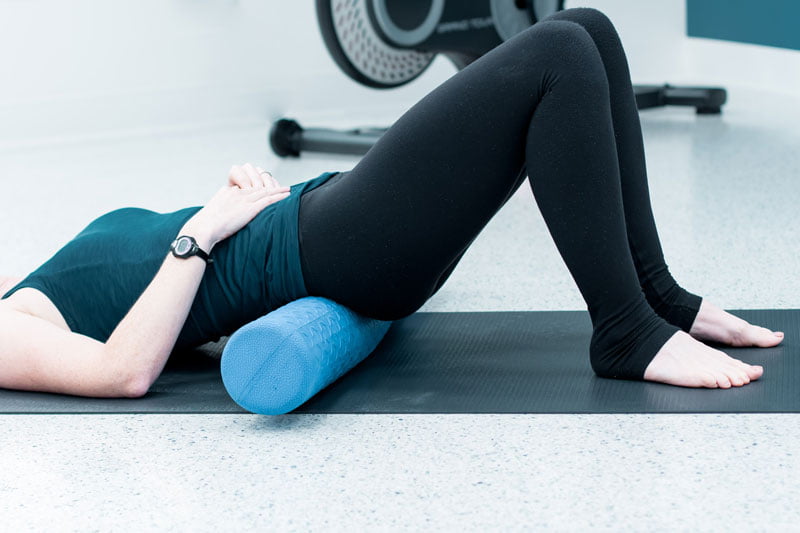Prioritizing self-care has never been more important than it is today. If the physical state
of our body is feeling ‘off’ or in pain, many times, this can be the result of the stress and
struggles going on within and around us. With many people working from home during
the pandemic, office workers ditched the commute and swapped a supportive desk
chair for a seat at the kitchen table, island or a soft sofa seat in the living room. It didn’t
take long for this new set up to take a toll on our bodies. Many people began to wake up
every morning with a sore neck or back, or found themselves rubbing sore shoulders
several days a week.
If this sounds familiar, you may benefit from working through a few decompression
exercises at the end of your day. In less than 15 minutes you can find more space and
relaxation to make a huge difference in your body. The only prop you need is a foam
roller. A foam roller can be used for so much more than working out knots in tight
muscles; they’re excellent tools to decompress and rejuvenate our bodies.

Common Posture-related Injuries
Sitting with poor posture for prolonged periods of time can cause excessive strain on
our muscles, tissues and joints.
Poor seated posture occurs when the spine resembles the letter “C”, with the head
slumped forward, shoulders/upper back rounded forward and rounding through the
lower back and pelvis. Injuries due to poor posture tend to show up over time due to
repetitive strain and often come in the form of muscle tension, soreness or tendinitis.
Some common posture related injuries include:
● Neck pain
● Headaches
● Upper/Lower back pain
● Tennis Elbow
● Carpal Tunnel Syndrome
● Hip pain

Foam Roller Sequence for Posture
These four decompression exercises will have you on the path to ‘zen’ in no time. Start
by finding a quiet space, with room to move on either side of you.
Cactus Arms Stretch
- Lie on the roller with your spine supported from head to tailbone, knees bent, with
your knees and feet, hip distance apart. - Start with your arms resting at your sides, palms facing the ceiling. Slowly glide your
arms along the floor until you feel a stretch across your chest. - Hold this position for up to 60 seconds.
Snow Angels
- Lie on the roller with your spine supported from head to tailbone, knees bent, with
your knees and feet, hip distance apart. - Start with your arms at your sides, palms facing the ceiling. As you inhale, slowly slide your arms out to the side, along the floor, trying to keep your forearms on the floor (or as close to it as you can).
- Once your arms are overhead, exhale to slide them back down to your sides.
- Repeat 8 times
Chest Opener
- Lie on the roller with your spine supported from head to tailbone, knees bent, with your knees and feet hip distance apart.
- Start with both elbows bent in front of you at chest level. As you exhale, draw your elbows to your side, touching the floor.
- Inhale to return to the start position.
- Repeat 8 times.
Thoracic Extension
- Start by placing the foam roller perpendicular to your spine at the bottom of your shoulder blades.
- Interlace your fingers and bring your hands behind your head to support your neck. Place your feet on the ground with knees bent, hip distance apart.
- Exhale as you arch your thoracic spine (middle/upper back) over the foam roller. Complete three breaths, deepening the stretch with each exhale, being careful not to flare the ribs up towards the ceiling.
- Inhale to curl back up to the start position.
- Repeat 3 times.
You can view these exercises in action on our YouTube channel here.
Additional Tips
- Try to complete the sequence slowly, ensuring a proper breathing pattern
—completely inhale and exhale through each movement. - Ease into the sequence — if you’re really tight and sore, don’t push past pain. Each movement will begin to get easier with every repetition. Listen to your body and only do what it is allowing you to do, without compromising breathing or form.
- Foam roller stretching is not a cure for every posture related issue. You may need to combine this with other changes to your sleep, home office set-up and/or include care from your physiotherapist, or other health care team members.
For a personalized approach to your health concerns, book in with one of our experienced Physiotherapists today!

